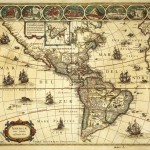Posté par Sébastien Bontemps, le 26 février 2016:
- Date limite : 29 avril 2016
- Date et lieu : 11-12 octobre 2016, Lisbonne
 Copies of Paintings in Portugal, Spain and the New World
Copies of Paintings in Portugal, Spain and the New World
Lisbon, Fundação Gulbenkian, October 11 – 12, 2016
Deadline: Apr 29, 2016
Copies of Paintings in Portugal, Spain and the New World, 1552-1752.
International Congress, Lisbon, Fundação Gulbenkian, October 11-12, 2016.
For the Portuguese and Spanish versions, please scroll down.
Organising Committee/ Comissão organizadora/ Comité organizador: Pedro Flor (Universidade Aberta de Lisboa), Susana Varela Flor (Universidade Nova de Lisboa), Luisa Elena Alcalá (Universidad Autónoma de Madrid), David García Cueto (Universidad de Granada) and Carla Mazzarelli (Università della Svizzera italiana).Sponsored by the Instituto de História da Arte, Faculdade de Ciências Sociais e Humanas da Universidade Nova de Lisboa, the Spanish National Research Project COPIMONARCH (I+D HAR2014-52061-P) at the Universidad de Granada, and the Fundação Calouste Gulbenkian in Lisbon.
The artistic patrimony of Portugal, Spain and the Latin American countries that once formed part of the Iberian empires, includes a great number of pictorial copies made between the sixteenth and the eighteenth centuries. Although on a smaller scale, copies of paintings also circulated and were a part of the heritage of the African and Asian territories that had ties to the Portuguese and Spanish empires. These works have received little attention even though they constitute a valuable source for understanding artistic taste as well as the devotional preferences of Iberian and Latin American society in this period. At the same time, pictorial copies shed light on a number of art historical issues, including the means of diffusion of artistic
models, stylistic trends, the kinds of referents available to local painters, and the dynamics of the art market and collecting. Although copies after works by Portuguese, Spanish and Latin American artists existed, it is notable that copies of famous paintings by Italian and Flemish painters, such as Raphael, Titian, Francesco Bassano, Rubens and Van Dyck, were far more abundant. The copies of non-Iberian art are a valuable testimony to the political, commercial, and cultural ties that existed between the Iberian territories and Italy and Flanders.
The international congress Copies of Paintings in Portugal, Spain and the New World, 1552-1752 invites reconsideration of the topic of the copy in these territories over the course of these two centuries. The period covered begins in 1552, the year in which Antonio Moro arrived in Portugal, and ends in 1752, when the Royal Academy of Fine Arts of San Fernando was established in Madrid. To a certain extent, these events mark the beginning and end of the history of the copy during the Early Modern Period in the Iberian world. This time period also includes the period of sixty years during which Portugal and Spain were unified under the same government owing to the turns of dynastic succession, the so-called period of the “two Philips” (1580-1640). Leaving aside the conflicts that emerged from Iberian union, which would eventually lead to the Portuguese Restauração in 1640, this period saw a rise in the circulation and exchange of sources and ideas between Spanish and Portuguese artistic centers, a circumstance which may also have had repercussions for the production of pictorial copies.
The congress will be organized around the following four sessions:
1) The state of research: Projects completed or currently being undertaken on the copy in Iberia, Latin America and Asia. Artistic Literature and Copies.
2) Case studies on Iberia, Latin America and Asia, 1552-1640.
3) Case studies on Iberia, Latin America and Asia, 1640-1752.
4) Technical research and study: the process of production, under-drawing, priming and grounds, conservation, technical analysis.
Members of the academic community are invited to submit their proposals for this conference before 29 April 2016. Please email abstract proposals (up to 20 lines), including a brief CV (1 page), to copimonarch@gmail.com. Papers will be accepted in Portuguese, Spanish, and English. The committee will inform of their selection to all the applicants in June 2016. A registration fee of 50 € will be required to all participants. The selected speakers will have the option of submitting their papers for publication in a special issue of the journal Revista de História da Arte –Serie W (http://revistaharte.fcsh.unl.pt/), due to appear in 2017. Papers for publication will have to comply with the journal’s editorial guidelines, including peer review.
Further information on the conference will be available from April 29th
2016 on the website http://wdb.ugr.es/~copimonarch/eventos/
The conference is unable to cover travel and accommodation costs for speakers. The organizers encourage interested parties to apply for outside aid from their respective institutions.
 Copies of Paintings in Portugal, Spain and the New World
Copies of Paintings in Portugal, Spain and the New World
Leave a Reply
You must be logged in to post a comment.